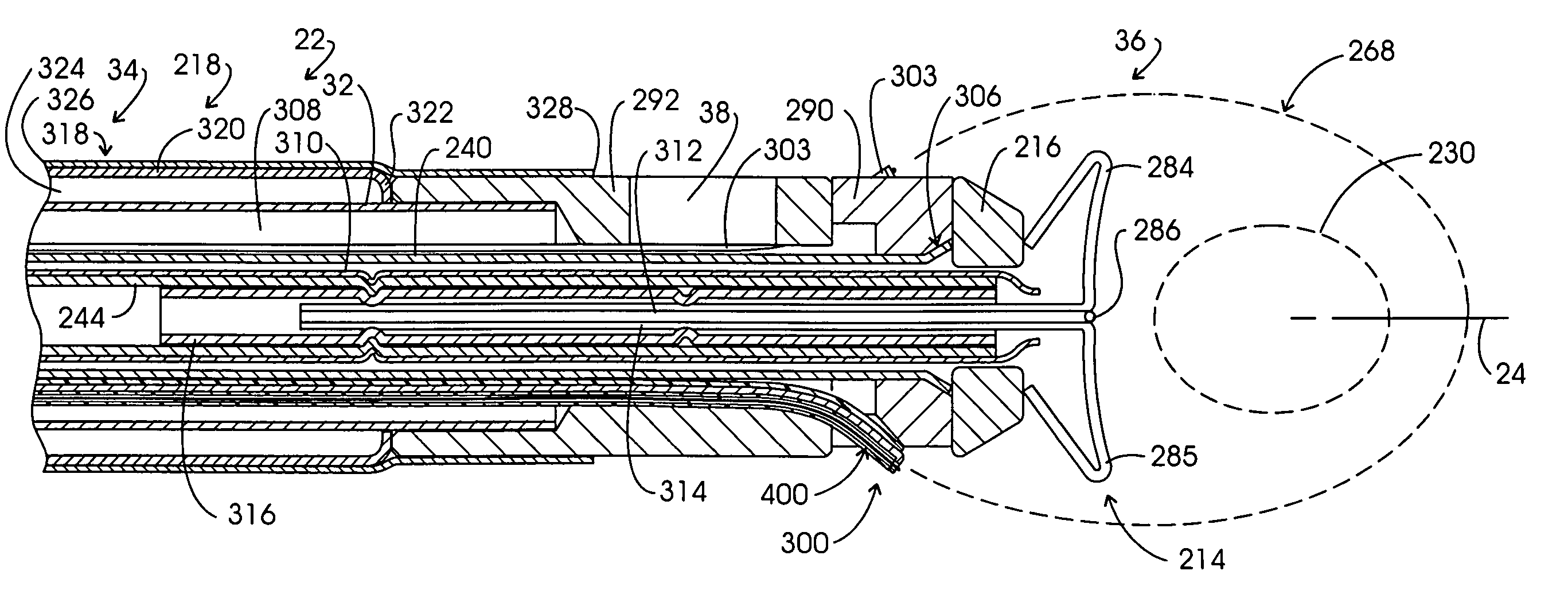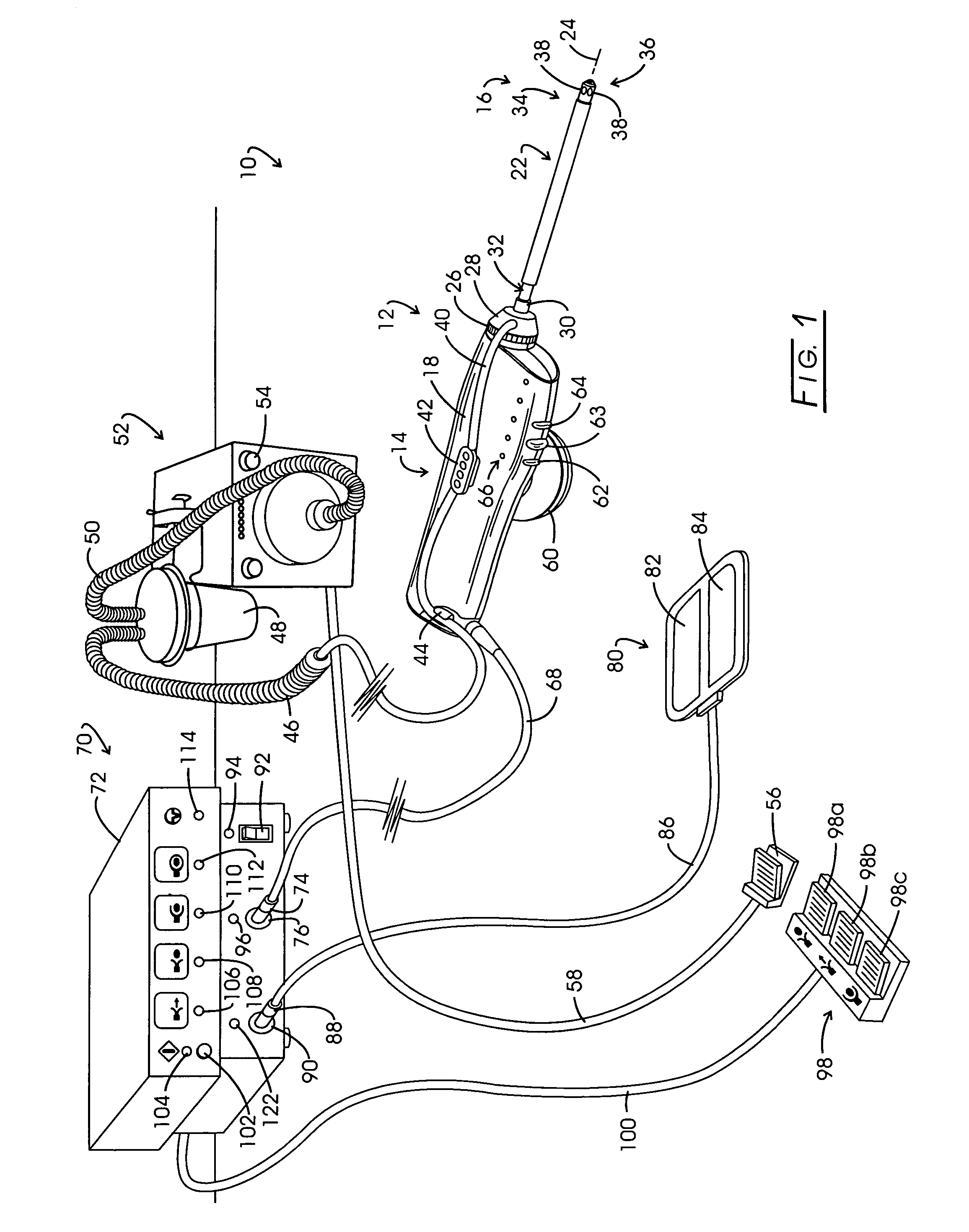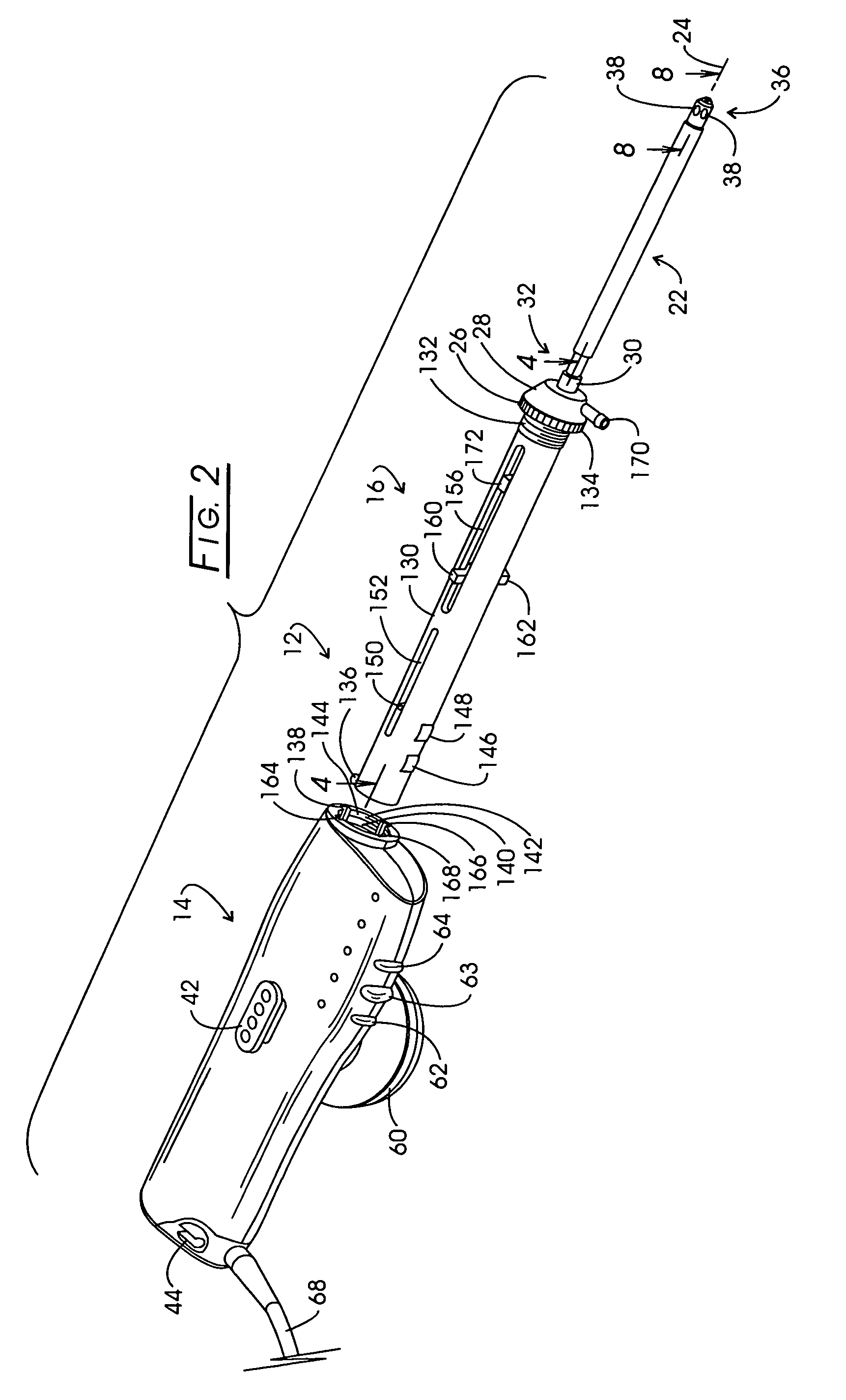Electrical apparatus and system with improved tissue capture component
a tissue capture and electric device technology, applied in the field of electric devices and systems with improved tissue capture components, can solve the problems of insufficient specimen material for diagnosis, inability to allow a more advanced pathological investigation, and a risk of false negative, so as to improve the capture component, enhance the tip region, and reduce the widthwise extent
- Summary
- Abstract
- Description
- Claims
- Application Information
AI Technical Summary
Benefits of technology
Problems solved by technology
Method used
Image
Examples
Embodiment Construction
[0053]In the discourse to follow, the above-discussed EN-BLOC® system is described in order to facilitate an understanding of the general design and operation of the capture component of the instrument and system at hand. As the description unfolds, the improvements to the capture component and its associated drive are detailed.
[0054]Referring to FIG. 1, the system for isolating and retrieving a target tissue volume or biopsy sample is illustrated in general at 10. System 10 comprises a tissue retrieval instrument represented generally at 12 which includes a reusable component represented generally at 14, sometimes referred to as a “handle”. Instrument 12 additionally includes a disposable component represented generally at 16, the rearward portion of which is removably mounted within the polymeric housing 18 of reusable component 14. The disposable component 16 is sometimes referred to as a “probe”.
[0055]Disposable component 16 includes an elongate cannula or support assembly repre...
PUM
 Login to View More
Login to View More Abstract
Description
Claims
Application Information
 Login to View More
Login to View More - R&D
- Intellectual Property
- Life Sciences
- Materials
- Tech Scout
- Unparalleled Data Quality
- Higher Quality Content
- 60% Fewer Hallucinations
Browse by: Latest US Patents, China's latest patents, Technical Efficacy Thesaurus, Application Domain, Technology Topic, Popular Technical Reports.
© 2025 PatSnap. All rights reserved.Legal|Privacy policy|Modern Slavery Act Transparency Statement|Sitemap|About US| Contact US: help@patsnap.com



